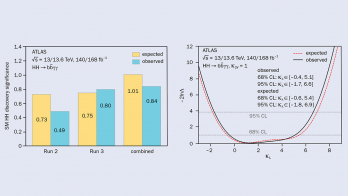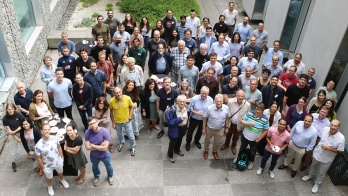
Now that all the particles predicted in the Standard Model (SM) have been discovered, most recently the Higgs boson in 2012, experiments at the LHC are active on two fronts: a deeper scrutiny of the SM and the search for new particles produced by beyond-SM (BSM) physics. Recent studies of rare processes involving the top quark serve both purposes. On one hand, they probe SM predictions and parameters in regions not accessed so far. On the other hand, if BSM couplings to the massive particles of the third generation of the SM are substantial, rare processes involving the top quark are golden candidates to reveal signs of BSM physics.
Based on data taken during 2016, the CMS Collaboration has recently published two such studies of rare top quark processes: the production of a single top quark associated with a Z boson and one or more jets (tZq) and the production of four top quarks (tttt). Detecting these processes is very difficult due to their tiny cross sections (about 0.8 pb for tZq and 0.01 pb for tttt in proton–proton collisions at 13 TeV), which means that no more than a few hundred tZq events and a dozen tttt events were expected after selection. If this was not challenging enough, these events have to be separated from an overwhelming amount of background from several other SM processes. To achieve a sufficient control of the background, the analyses are restricted to final states containing multiple electrons and muons. Furthermore, the tZq analysis uses multivariate techniques to classify event candidates according to their topologies.

In both analyses, the signal is extracted with maximum-likelihood fits performed simultaneously in the control regions with different selections. As a result, CMS was able to report evidence of the tZq process with a significance of 3.1 standard deviations (3.7 expected) against the background-only hypothesis, and a cross section of 0.123+0.033–0.031 (stat) +0.029–0.023 (syst) pb, in agreement with the SM. CMS also reported a small excess of tttt events over the background-only hypothesis, with a significance of 1.6 standard deviations (1.0 expected), and derived an upper limit of 0.0208+0.0112–0.0069 pb on the tttt production cross section. The high energy and the large integrated luminosities provided by the LHC have opened a new window on precision physics, in which measurements of rare processes involving top quarks play a central role.
As more LHC data become available, these studies will provide more stringent tests of the SM while increasing the chances of revealing BSM processes.








